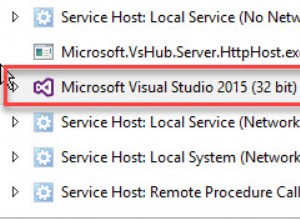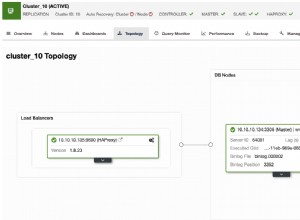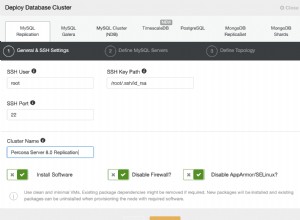Quando mi guardo intorno ho trovato operatore LIKE in LINQ che erano un che hanno alcuni buoni esempi di come potresti farlo. Ho testato quello qui sotto che era dal link sopra
Ecco un'estensione per l'utilizzo di Like con lambda pubblicata da adobrzyc
public static class LinqEx
{
private static readonly MethodInfo ContainsMethod = typeof(string).GetMethod("Contains");
private static readonly MethodInfo StartsWithMethod = typeof(string).GetMethod("StartsWith", new[] { typeof(string) });
private static readonly MethodInfo EndsWithMethod = typeof(string).GetMethod("EndsWith", new[] { typeof(string) });
public static Expression<Func<TSource, bool>> LikeExpression<TSource, TMember>(Expression<Func<TSource, TMember>> property, string value)
{
var param = Expression.Parameter(typeof(TSource), "t");
var propertyInfo = GetPropertyInfo(property);
var member = Expression.Property(param, propertyInfo.Name);
var startWith = value.StartsWith("%");
var endsWith = value.EndsWith("%");
if (startWith)
value = value.Remove(0, 1);
if (endsWith)
value = value.Remove(value.Length - 1, 1);
var constant = Expression.Constant(value);
Expression exp;
if (endsWith && startWith)
{
exp = Expression.Call(member, ContainsMethod, constant);
}
else if (startWith)
{
exp = Expression.Call(member, EndsWithMethod, constant);
}
else if (endsWith)
{
exp = Expression.Call(member, StartsWithMethod, constant);
}
else
{
exp = Expression.Equal(member, constant);
}
return Expression.Lambda<Func<TSource, bool>>(exp, param);
}
public static IQueryable<TSource> Like<TSource, TMember>(this IQueryable<TSource> source, Expression<Func<TSource, TMember>> parameter, string value)
{
return source.Where(LikeExpression(parameter, value));
}
private static PropertyInfo GetPropertyInfo(Expression expression)
{
var lambda = expression as LambdaExpression;
if (lambda == null)
throw new ArgumentNullException("expression");
MemberExpression memberExpr = null;
switch (lambda.Body.NodeType)
{
case ExpressionType.Convert:
memberExpr = ((UnaryExpression)lambda.Body).Operand as MemberExpression;
break;
case ExpressionType.MemberAccess:
memberExpr = lambda.Body as MemberExpression;
break;
}
if (memberExpr == null)
throw new InvalidOperationException("Specified expression is invalid. Unable to determine property info from expression.");
var output = memberExpr.Member as PropertyInfo;
if (output == null)
throw new InvalidOperationException("Specified expression is invalid. Unable to determine property info from expression.");
return output;
}
}
Per usarlo devi semplicemente aggiungere la funzione Mi piace dove inseriresti le funzioni Contiene. Puoi vedere di seguito un esempio
using (CustomerEntities customerContext = new CustomerEntities())
{
IQueryable<Customer> customer = customerContext.Customer.Like(x => x.psn, "%1%");
}
Questo creerà una query sql simile a questa.
SELECT
[Extent1].[psn] AS [psn]
FROM [dbo].[Customer] AS [Extent1]
WHERE [Extent1].[psn] LIKE '%1%'




